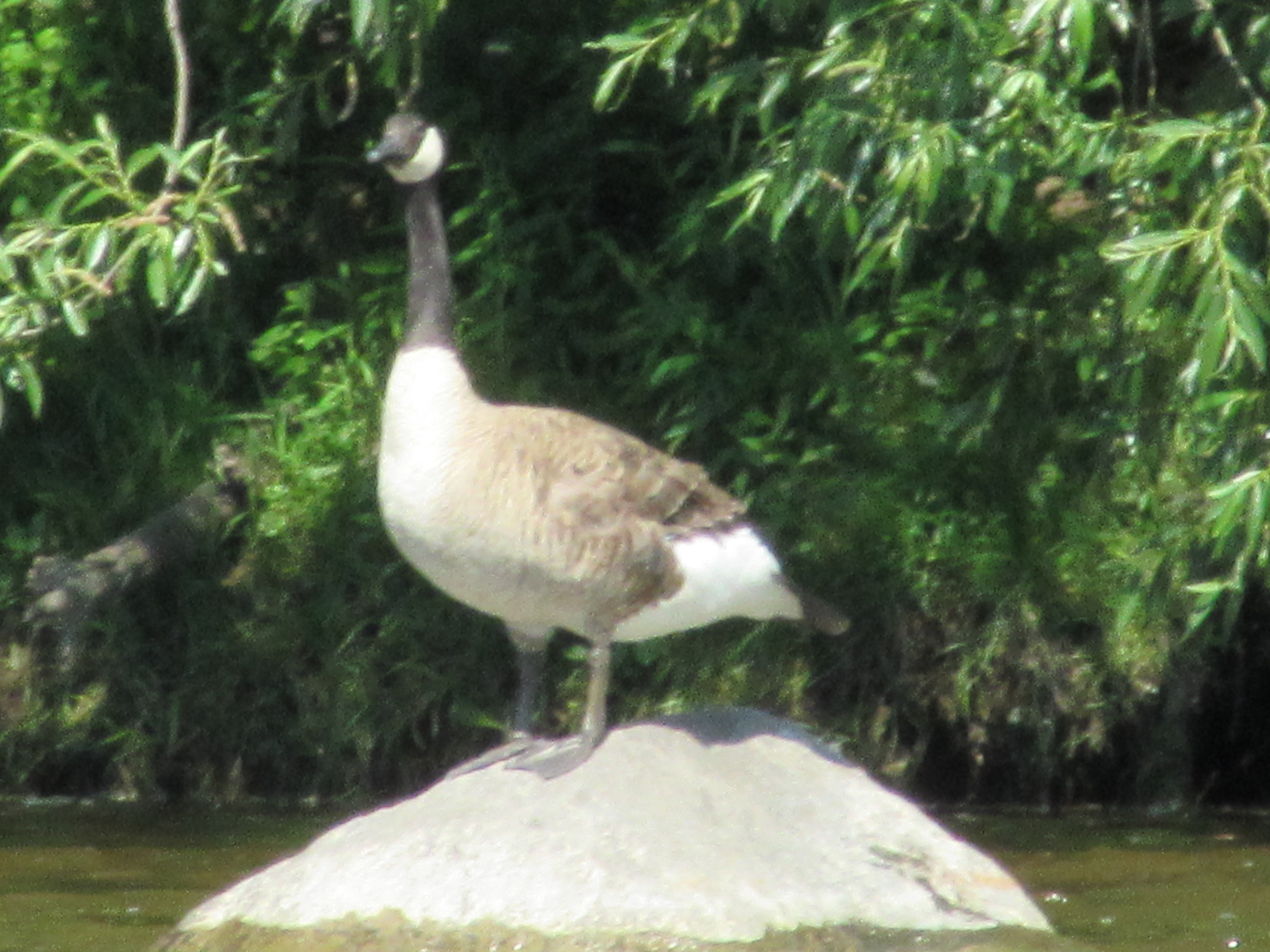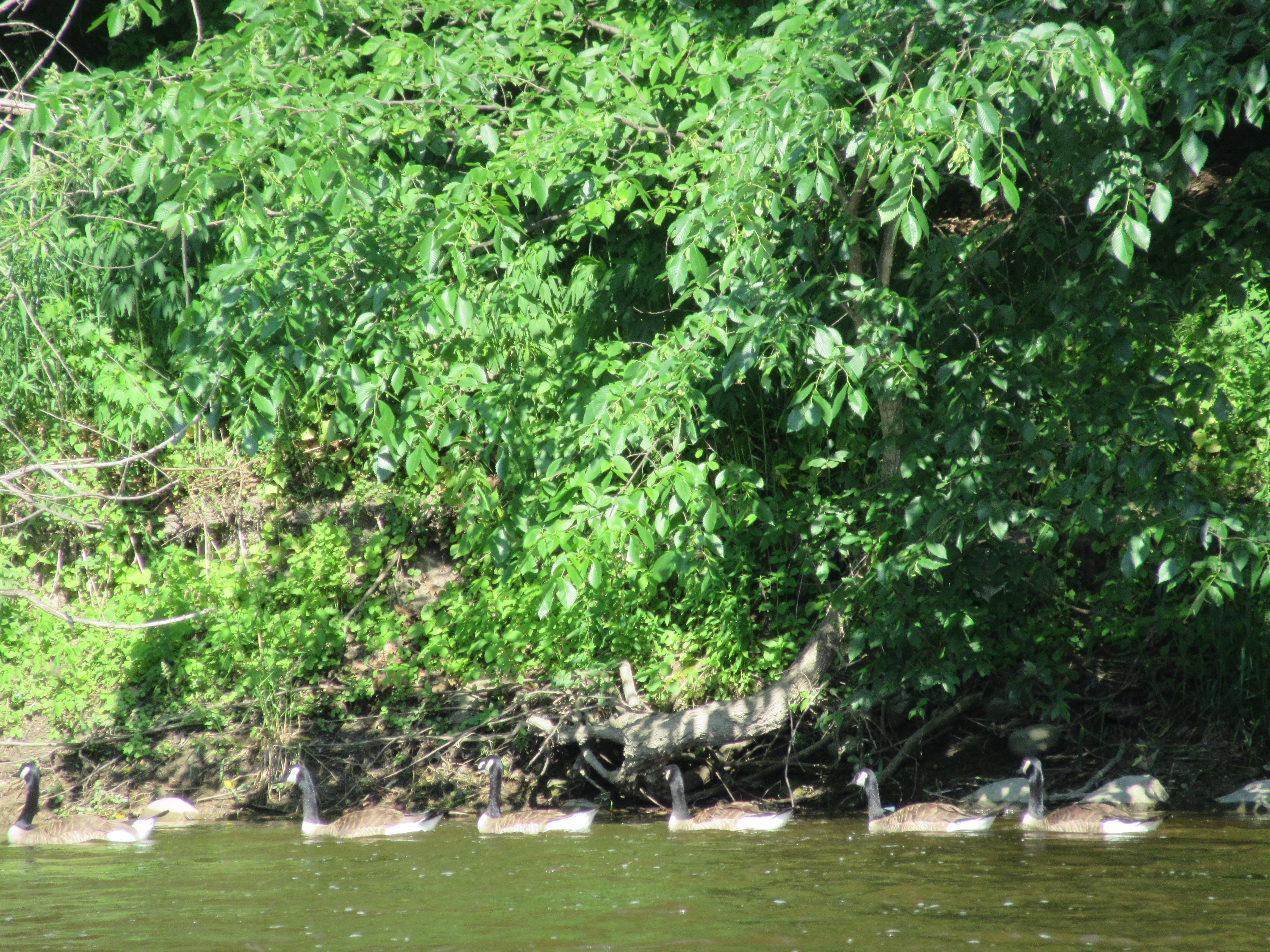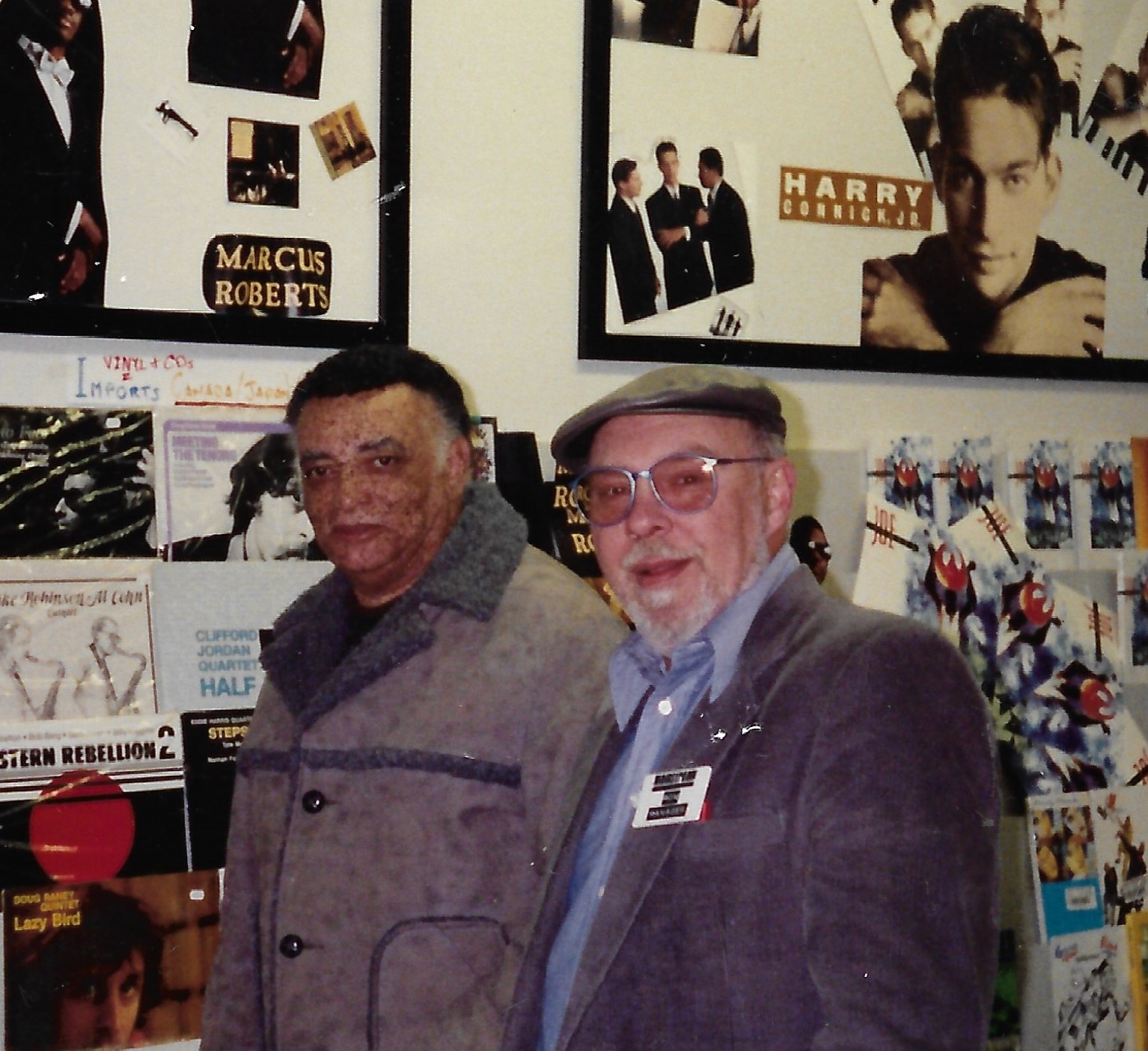
Cuzner hangin’ with a celebrated Milwaukee guitarist, Manty Ellis.
The sublime strains of Duke Ellington’s nocturnal reverie, “Solitude” faded away. A voice arose in your radio, now, a few minutes after midnight:
“Good morning! And welcome to Friday…Ron Cuzner is my name. And this is The Dark Side, The Dark Side of Friday…the fourth of February, nineteen seventy-seven. This is jazz.”
Today, on March twenty-seventh, two thousand and three, Ron Cuzner made his last earthly exit. I wanted to honor his memory with reflections and documents never before published, photographs of Cuzner and his milieu by jazz photographer and quiltmaker Charles Queen, which clearly blend artistry and Milwaukee cultural history. 1
Cuzner often declared on the air that Billy Higgins was his favorite drummer, and part of me suspects that Higgins was his favorite musician period, because, not unlike Higgins, Cuzner was a master of rhythmic phrasing, of textured dynamics…of nuanced articulation…of the pregnant pause…of the held-breath ellipsis.
If Cuzner’s breath and voice weren’t akin to a drummer’s, consider an artist’s paintbrush and oils. But his medium was modern, electronic. He was an original in the medium of Marconi…the radio. On a stage, as the city’s first-call jazz concert emcee, he was almost equally at home. He commanded the stage with an offhanded grace, even when you had to snicker when he stood before a crowd, say, at Jazz in the Park — in his sports-car driver cap, funky shirts, shorts, sneakers and white socks. He often said that if he had not discovered jazz and radio, he would’ve gone into theater.
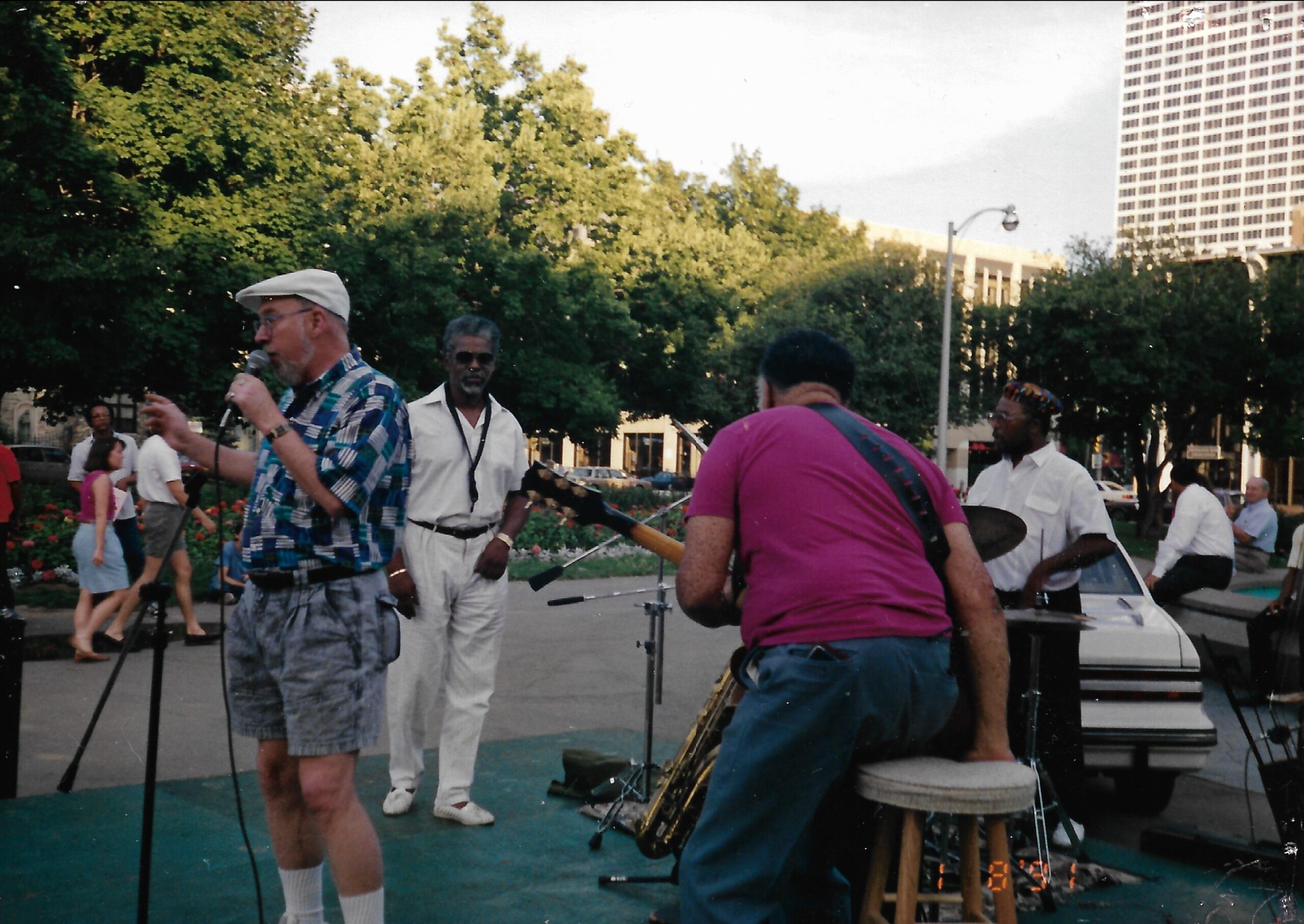
Ron Cuzner warms up the crowd as (l-r) Berkeley Fudge, Manty Ellis, and Victor Soward prepare to perform at Jazz in the Park.
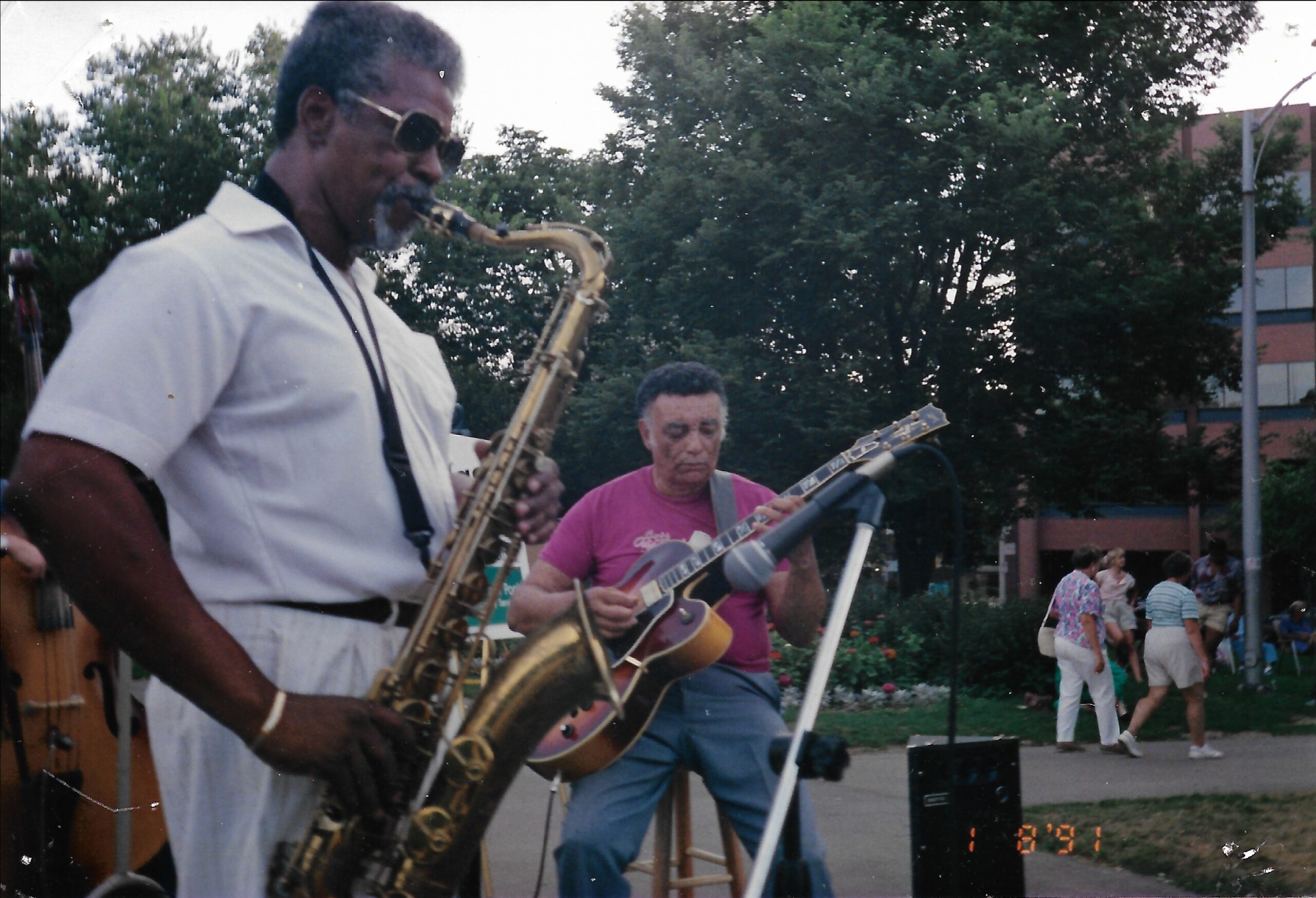
Fudge and Ellis jamming in the Park
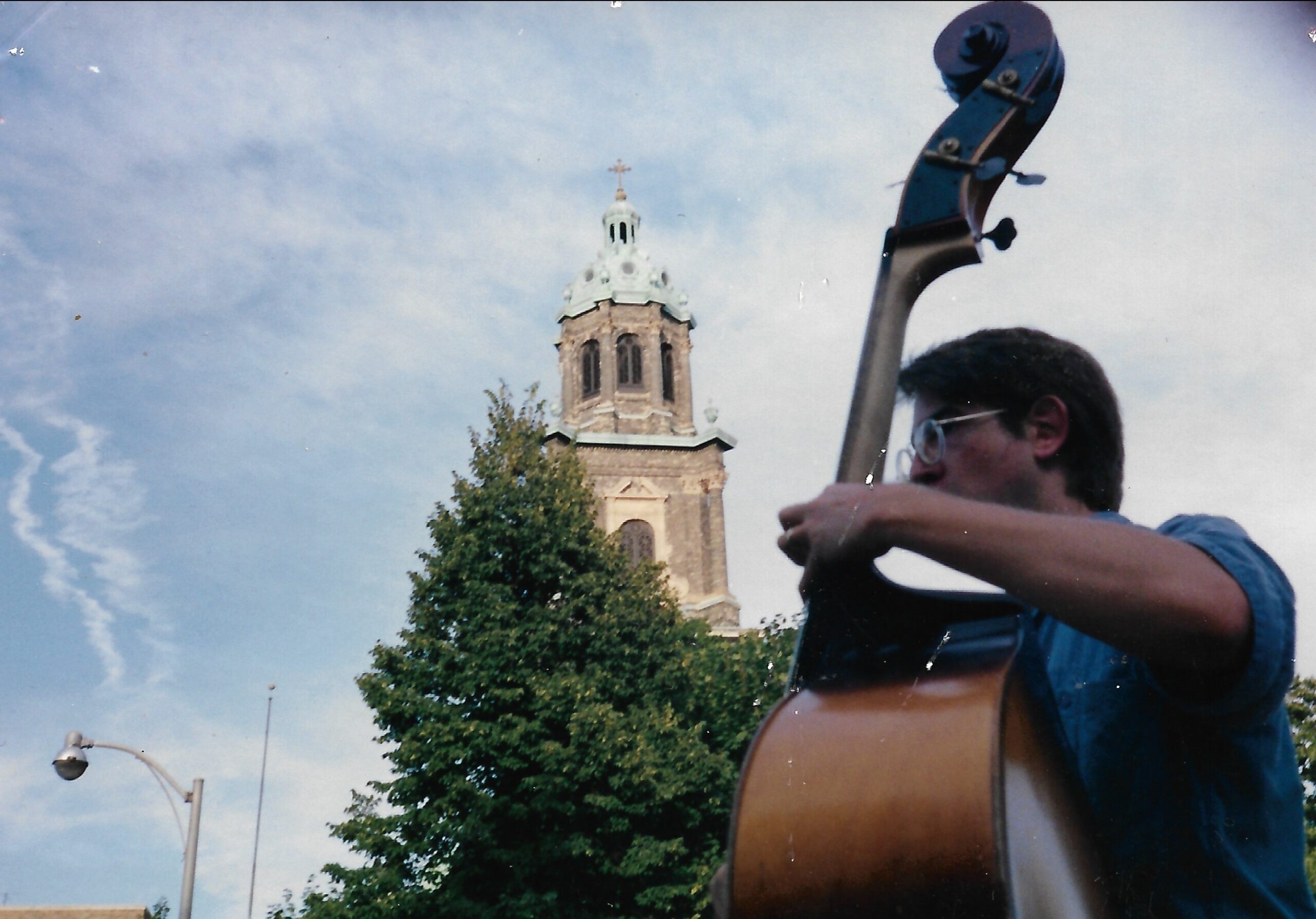 A bassist performs in front of the iconic St. John’s Cathedral at Jazz in the Park
A bassist performs in front of the iconic St. John’s Cathedral at Jazz in the Park
Yes, “Ronald Graham Cuzner” had an ego, but he enfolded himself into the music like a man embracing the vibration, the sumptuous arrangement, the paradiddle parade, the butterfly melody. These were his vibrations, he felt, and they were his audience’s. In other words, I’m probing for a clue to the man behind the stylish vocal curtain.
The curtain was significant, it was clearly presentational and, perhaps some thought “Here was a Wizard of Oz,” or just a wizard of odd. Like the art form he loved, he wasn’t the right thing for everyone. In a way, Ron kept himself inside his own world, the world of Monk’s ” ‘Round Midnight,” the ultimate 100-proof jazz ballad (or is that Strayhorn’s “Lush Life”?). At the same time, he loved sharing, saying, in effect, isn’t this hip, or magnificent, or sheer brilliance?
I hope this photo essay reveals something anew, because Cuzner was invisible in his element, on the airwaves, seeping his intoxication into your subconscious. He was constantly reaching out. And, I would posit, there was a people person — there, behind the stylized hipster.
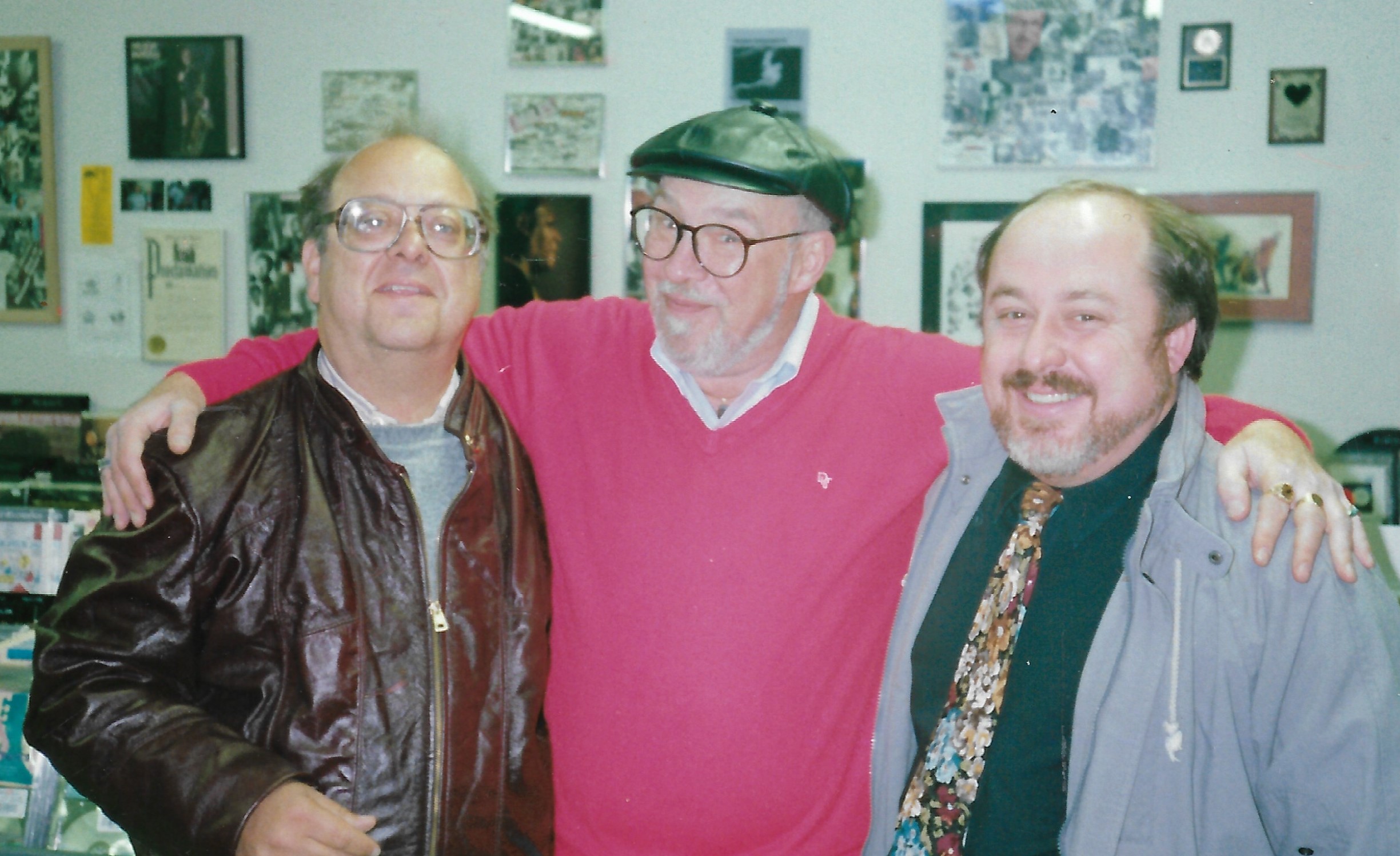
Jazz record store owner Ron Cuzner (center) displaying his Milwaukee Gemeitlekiet with jazz bandleader Nick Contorno (left) and musician Jim Krofta.
Though he didn’t ask for callers like a talk show, he welcomed them, because he was human, and how many people aren’t lonely sometimes in the wee, small hours of the morning? His classic time slot was midnight to 6 a.m. And any time I ever spoke with him, he was cool, and easy, but warm, like one last martini at closing time.
His playful friendliness was typified by a favorite line of his: “I sincerely hope you are warm tonight, and that you are together tonight, and that your cookie jar is filled to the very brim … with the cookies of your choice, of course.”
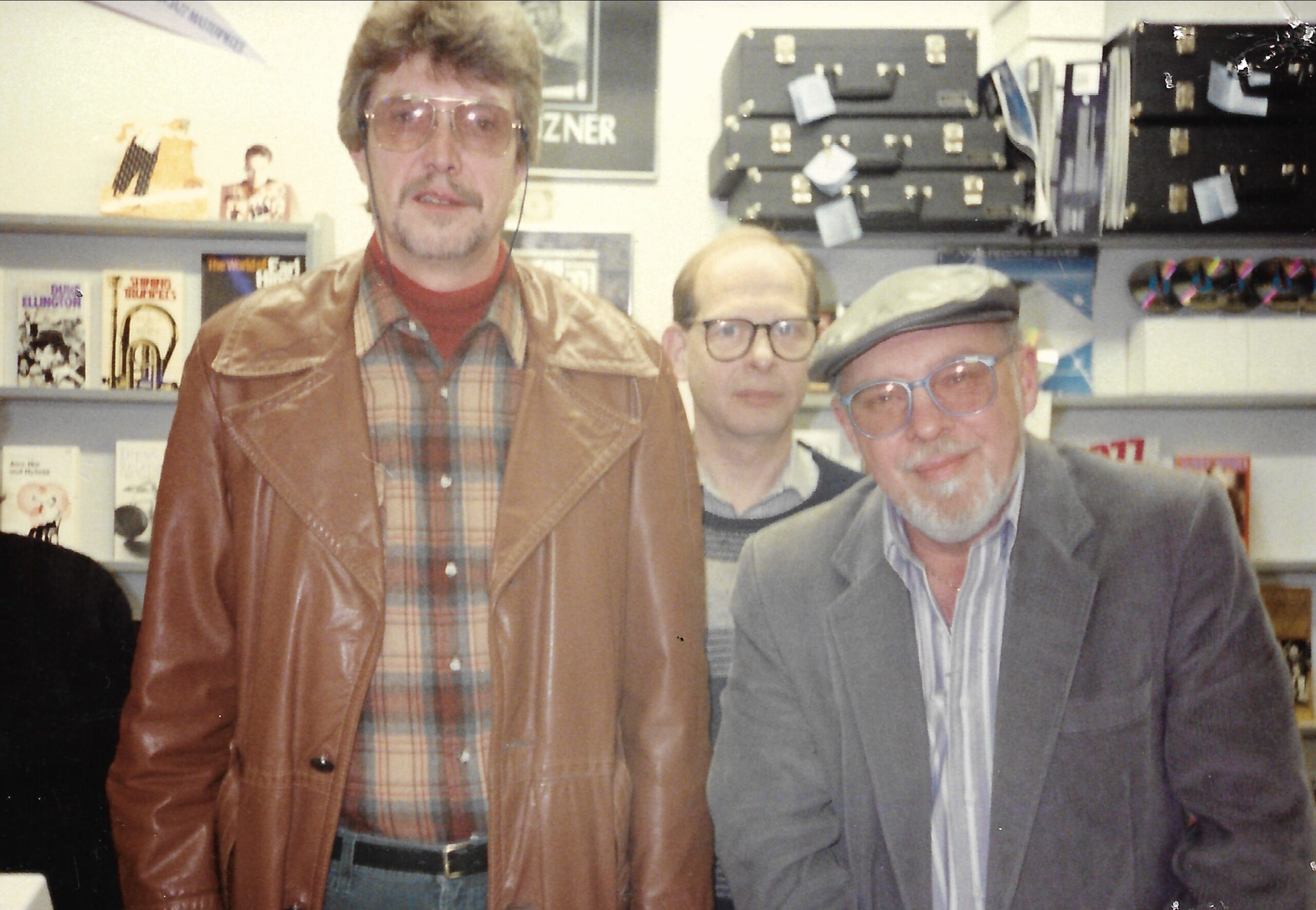
Cuzner (right) and his employee Sam Linde, welcome towering trumpeter Kaye Berigan, to the shop.
After you called him during his show for a request or a chat, he would often play a tune for you, but with a sly-but-personal manner. Many musicians especially may recall this post-chat Cuzner rap (fill in your name…): “It’s the suggestion of Kevin Lynch that you drive with caution this evening. You see, his life . . . may depend on it. A message of safety from Kevin Lynch and WFMR, Milwaukee.”
How cool is that? Huh? On one occasion I remember especially, we had a sweet little phone chat and then, immediately he played a tune from Dave Holland’s Conference of the Birds album. I was so impressed by his tacit musical dedication because he nailed me and my taste, because he knew me. Of course, my work as a Milwaukee jazz journalist helped him know my tastes, too. He would later have the remarkable graciousness to recommend me to replace him as a jazz radio host, when he left WLUM, an urban radio station.
These photos notably include his last public “gig,” as a record shop owner, at Ron Cuzner’s Mainstream Jazz Cellar. The place is where Ron literally met his audiences, musicians and lovers of the music, and of the moon’s moody atmosphere.
It became a slice of local jazz history as he hosted chamber jazz events, like one jam featuring then-budding jazz musicians (left to right, below), now-internationally known pianist David Hazeltine (standing, left), and two of his Wisconsin Conservatory students Mark Davis and John Foshager. 1
For me, and many others, Cuzner oversaw a quietly great era for The Music, as the city’s nocturnal jazz spirit. At 6 a.m., he’d sign off the air with the sun-rising music of Don Shirley. If you weren’t in blissful slumber, all felt right with the world.
If you don’t believe me, or put “trust” in Cuzner because he had trust in you, to have the best of good nights, as in this stylish evening bon mot:
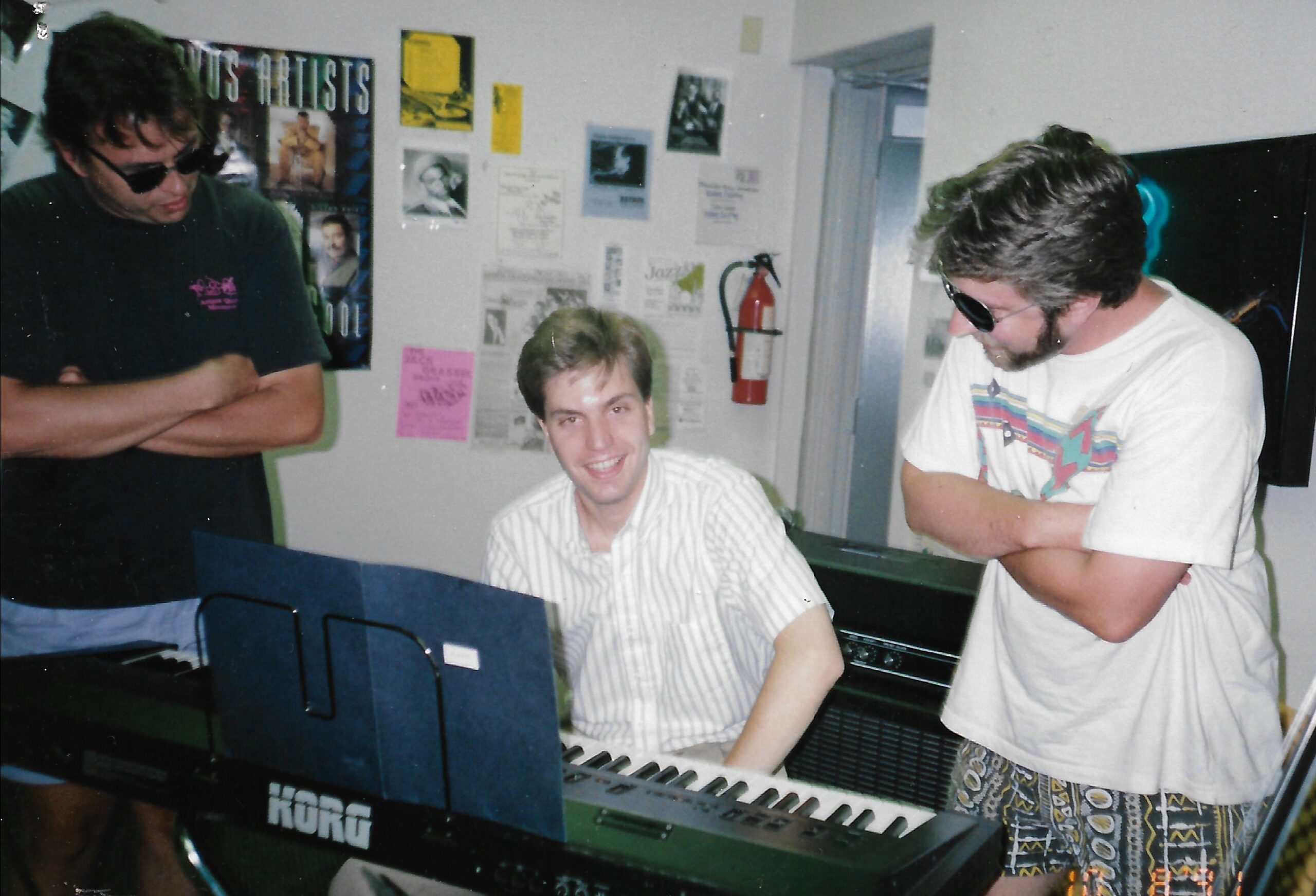
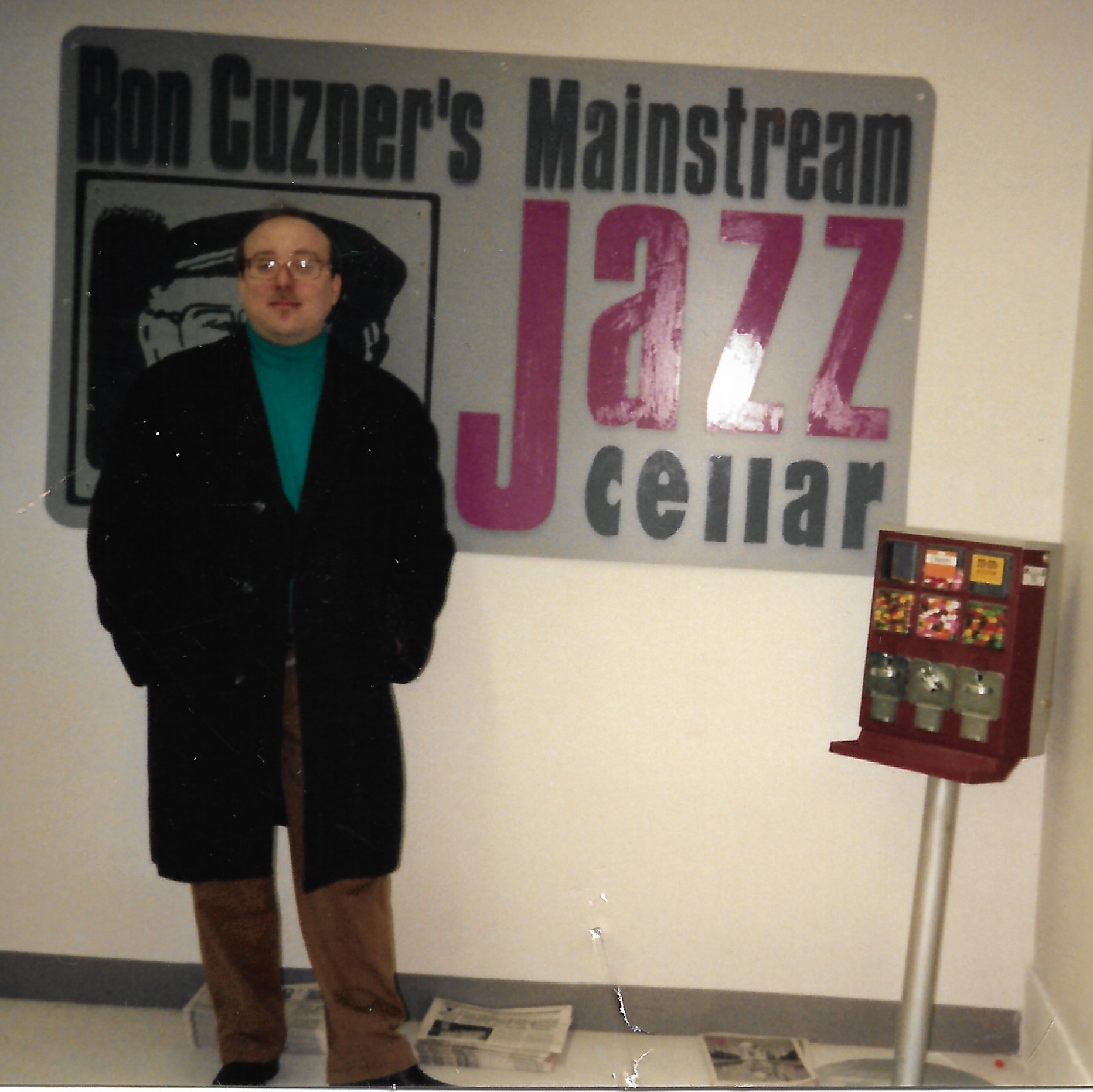
Perhaps Milwaukee’s most renowned contemporary jazz musician, multiple Grammy-winner Brian Lynch (above), frequented Cuzner’s Jazz Cellar back in the day.
Cuzner also drew a hip and sporty crowd, like former MU basketball great, Bo Ellis,(below).
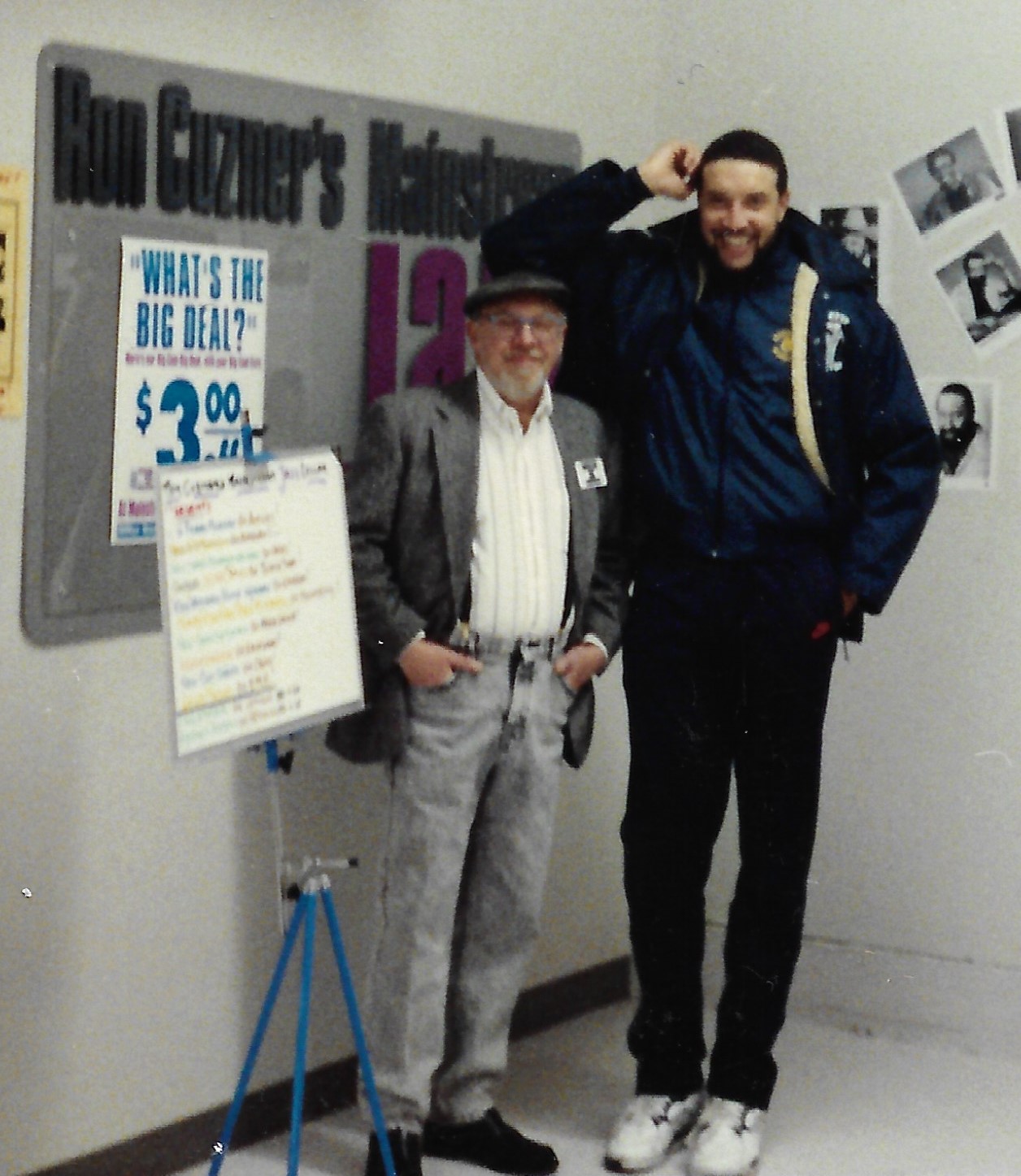
________________
1 Mark Davis is now a distinguished Milwaukee jazz pianist and director of the Milwaukee Jazz Institute.
All photographs by and courtesy of Charles Queen.




